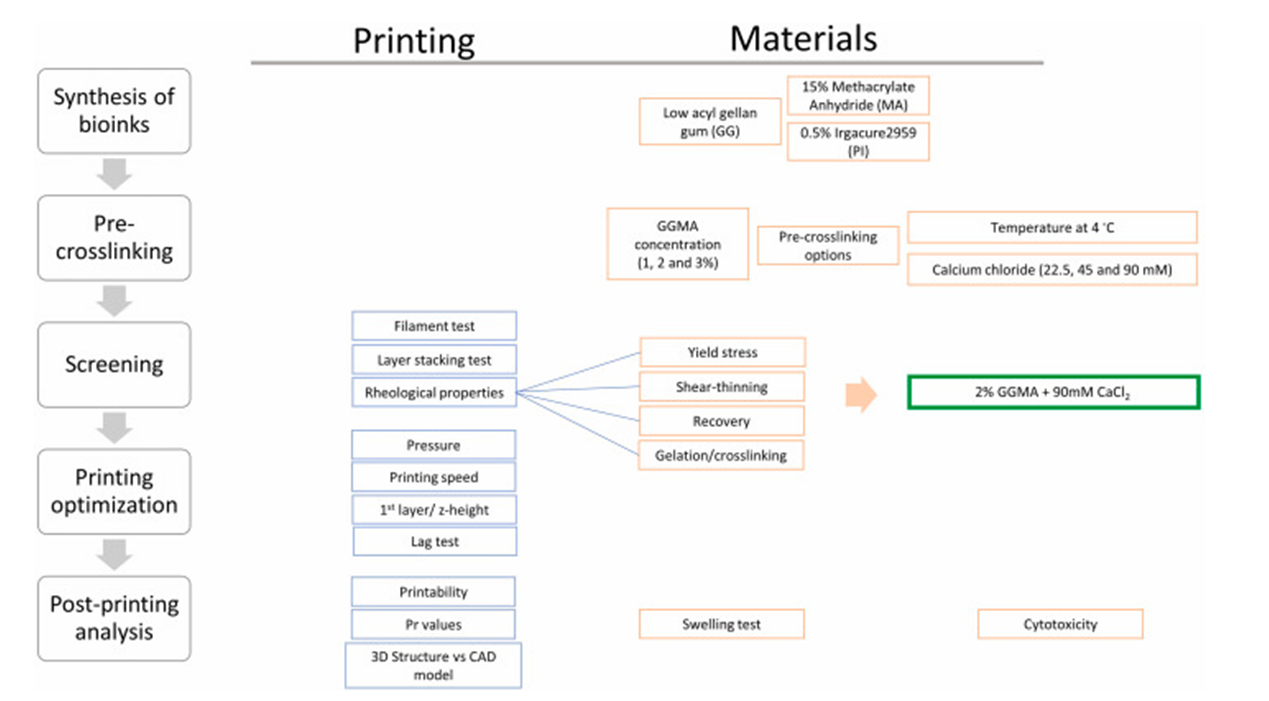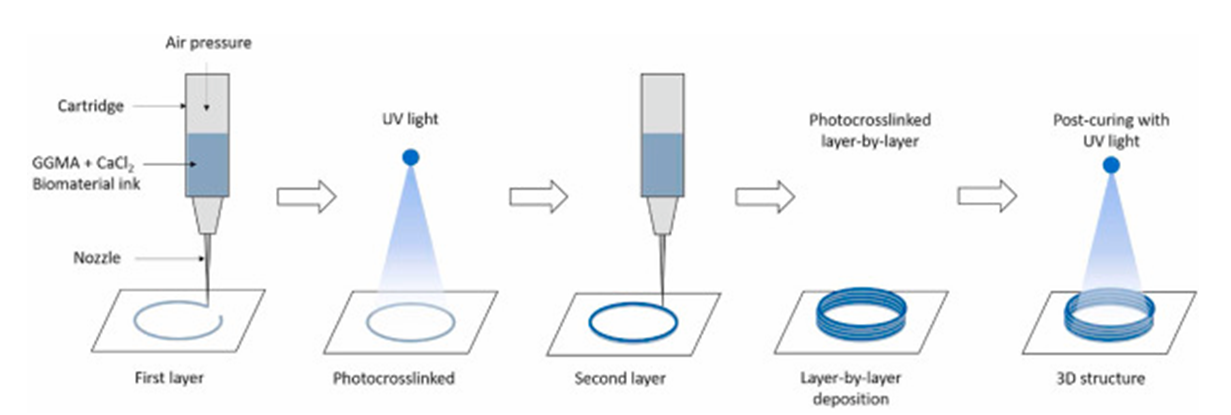By Brinter Ltd.
Brinter® helps to discover new photocrosslinkable bioinks for 3D bioprinting
Turku, Finland: – Pioneering modular multi-material bioprinting platform developer and manufacturer, Brinter, has participated in original research to discover new printable materials (bioinks) to tackle the shortage of materials suitable for bioprinting.
Brinter’s Product Manager, post-doctoral researcher Sanna Turunen, has joined a team from the Kellomäki Lab Biomaterials and Tissue Engineering Group at Finland’s Tampere University to develop a new technique for developing a photocrosslinkable 3D bioink from Gellan gum.
The team has shared the results of their study in an article ‘Two-step crosslinking to enhance the printability of methacrylated gellan gum biomaterial ink for extrusion-based 3D bioprinting’ published in the journal Bioprinting (see Resources).
Beyond hydrogels
Lack of ideal bioinks has been identified as one of the major bottlenecks limiting the progress of the bioprinting field.
Extrusion-based bioprinting requires bioinks, which are mostly made of soft hydrogels or water-soluble polymers. The development of such bioinks must meet specific requirements for fluid properties such as viscosity, shear-thinning, layer stackability and cell encapsulation, with choice of bioink determined by a specific application, such as soft or hard tissues, biosensors, etc.
Hitherto, hydrogel precursors have been the material of choice of bioinks for extrusion-based 3D bioprinters due to their biocompatibility, high hydrophilicity, cell-friendly characteristics, and tunable mechanical properties. However, to create suitable hydrogels for extrusion-based bioprinting, the printability and cell survivability must be optimised throughout the printing process.
Focus on photocrosslinking
There has been an upsurge in interest in photocrosslinkable bioinks for 3D bioprinting due to their versatility and ease of use. However, a specific functional group, such as methacrylate or photo-click chemistry, is needed in the polymer backbone to enable photocrosslinking.
The study team set out to explore a method for developing a photocrosslinkable bioink from methacrylated gellan gum (GGMA) precursor, which has been proven to possess good rheological properties for an injectable hydrogel due to its inherent viscosity. It can also be photocrosslinked in situ at the target site.
Two-step breakthrough
The main challenge the team faced was that GGMA precursors alone are unable to maintain a stable filament shape after extrusion from the nozzle.
The team developed a new two-step technique involving ionic and photocrosslinking to make the GGMA biomaterial ink printable. In the presence of an ionic crosslinker (Ca2+), GGMA transformed from a liquid precursor to a weak extrudable hydrogel. They then used photocrosslinking to turn the weak hydrogel into true hydrogel with good shape fidelity.
The study determined 2% GGMA with 90 mM calcium chloride as the formulation with the best printability. The optimum ink formulation was then used to print 3D structures. This optimised GGMA ink was printed with consistent fibres and provided high printability during the fabrication. The 3D printed structures still lacked high resolution compared to the control structures.
Wide applications potential
The team concluded that their two-step crosslinking technique provided pre-crosslinked GGMA biomaterial ink with good printability, enabling the printing of genuine 3D constructs across a wide range of bioprinting applications.
“The characterizations have proved that the two-step crosslinking technique is an effective approach to turn unprintable GGMA inks into feasible bioinks for the fabrication of 3D structures. In the case of ionically pre-crosslinked inks, we have shown good fiber formation and rheological behaviour. The 3D printed structures presented high accuracy, shape fidelity, structural integrity and mechanical stability,” the study concludes.
About Brinter
Founded in 2020 via partial demerger in Turku, Finland, Brinter is the manufacturer of a modular multi-material bioprinting platform scalable from manual R&D to automated production. The company works with science and bioengineering organizations to integrate 3D bioprinting into their research, manufacturing, and treatment methods. The goal is to break through current technological limitations and improve people’s quality of life.
Brinter has bootstrapped its growth since 2019, when it launched its first product, and is currently active in more than ten countries, including Germany and the UK.
Customers of the company now include bio and pharmaceutical companies like Nanoform, as well as research organizations like VTT, BEST group at the University of Glasgow, Johannes Gutenberg University of Mainz, the University of Oulu, and the University of Helsinki, whose directors are enthusiastic about the technology’s potential.
To date, Brinter has raised a total of €1.2M in funding and is currently active in more than ten countries, including the USA, Germany, India, and the UK.
For more information, visit www.brinter.com.
Resources
Click on Two-step crosslinking to enhance the printability of methacrylated gellan gum biomaterial ink for extrusion-based 3D bioprinting to view the original research article.


















